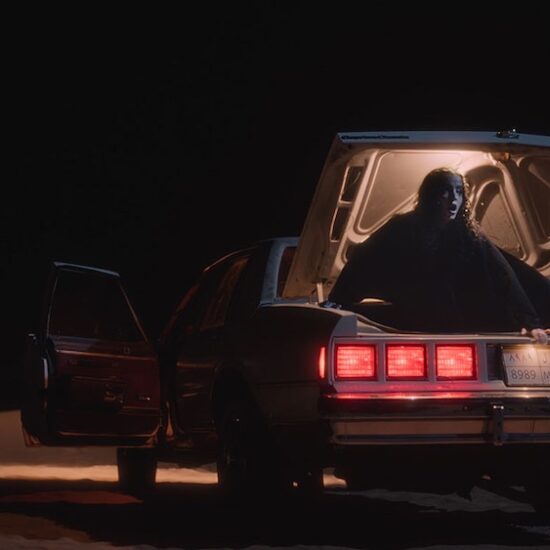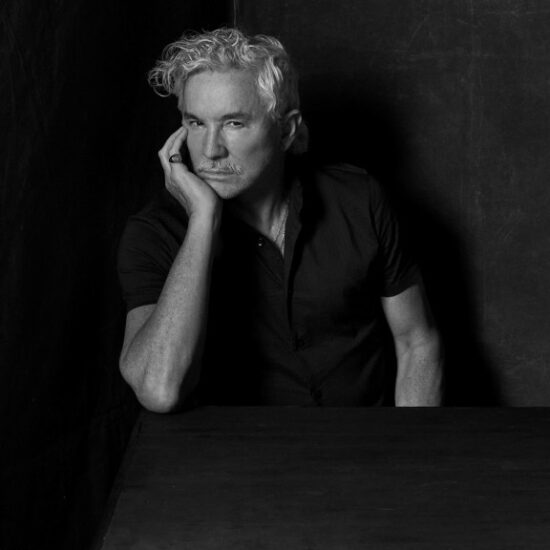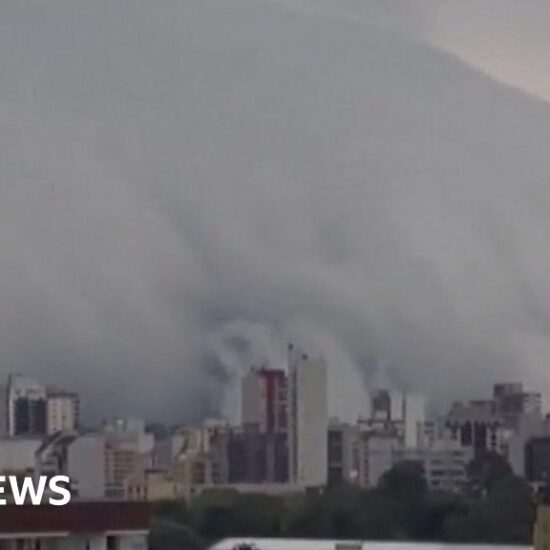
Crowned with cranes, the Jeddah Tower emerges in the distance as an under-construction 826-foot-tall spaceship presiding over Saudi Arabia’s second-largest city. Through the desert haze you can almost see the more than 3,000-foot height it was supposed to reach, the lively business district its innovative design was meant to inspire and the tens of thousands of people filling the palm-tree-lined boulevards at its feet.
Planners envisioned the tower as the piece de resistance of a full-on economic revitalization with the declared aim of nothing less than “changing the mind-set of Jeddah.”
Instead, six years after it was to open, it remains a construction site with no construction — at the moment, anyway — and looms like a question mark over Saudi Crown Prince Mohammed bin Salman’s gamble to overhaul his country of 36 million people.
The Jeddah Tower, the centerpiece of an ambitious development project in Saudi Arabia’s second-largest city, remains unfinished six years after it was to open.
(Amr Nabil / Associated Press)
Enlisting some of the world’s star architects, Saudi Arabia is launching mammoth development projects by the dozen that it says will remake the country’s oil-based economy, cement its claim as the region’s commercial superpower and supercharge its cities’ ascent to global status.
With the powerful, $600-billion Saudi sovereign Public Investment Fund behind him, the crown prince is intent on eclipsing rivals in a region that is no stranger to Ozymandian-scale projects. In 2017, he announced his flagship Neom project, a Massachusetts-sized megacity being built in Saudi Arabia’s northwest. Then came the Line, a pair of “horizontal skyscrapers” stretching 105 miles — yes, miles, meaning that the two complexes would run an unbroken distance equal to that between downtown Los Angeles and Joshua Tree National Park.
There’s also Trojena, a ski resort that will host the 2029 Asian Winter Games; Oxagon, the world’s largest floating industrial complex; King Salman Airport, a so-called aerotropolis that is supposed to handle 120 million travelers by 2030; and Sindalah, an island project off Neom’s coast announced last month that bills itself as a 9-million-square-foot “playground for the world’s luxury travelers.”
More of what Saudi Arabia dubs giga-projects are expected. This year, the kingdom dominated the Middle East’s construction sector with 35% of contract awards by value, according to the Middle East Economic Digest group. Out of $719 billion earmarked for 15 giga-projects, only $30 billion has been awarded so far, meaning that the developments are still at a nascent stage, with the pace expected to accelerate in the coming few years.
But clouding those ambitions are the husks of previous endeavors across Saudi Arabia and the wider region that were supposed to do much the same thing yet now stand all but abandoned. Their failure points up the central question that various Persian Gulf potentates, despite billions of dollars and decades of effort, have been unable to answer: Can the combination of limitless funds, architectural star power and sheer chutzpah create a place where people actually want to live? Or to put it more simply, if you build it, will they come?
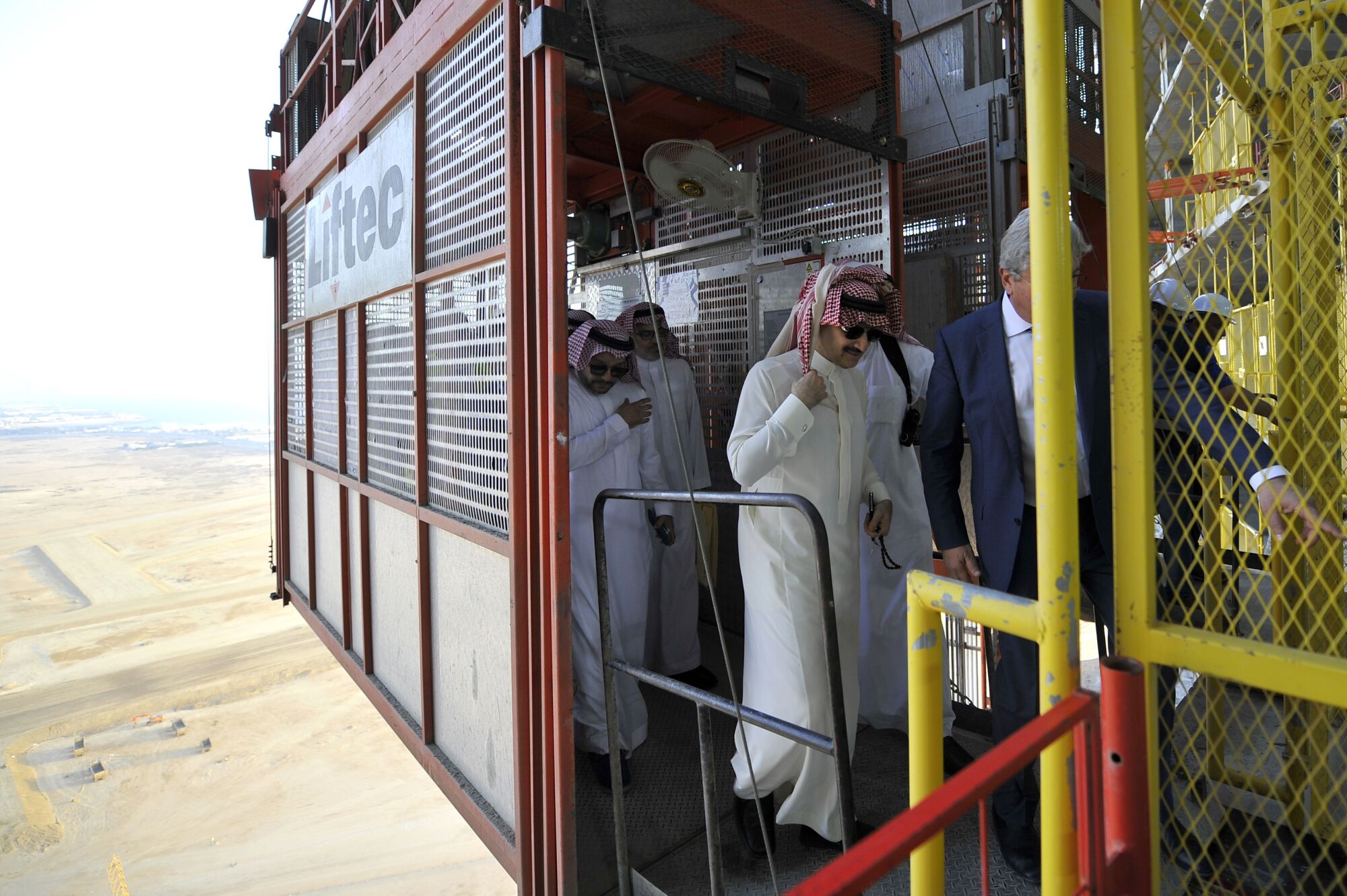
Launched in 2008 but still incomplete, the Jeddah Tower was the brainchild of Saudi billionaire Prince Alwaleed bin Talal, center.
(Amer Hilabi / AFP/Getty Images)
Launched in 2008, the Jeddah Tower was the brainchild of Saudi billionaire Prince Alwaleed bin Talal, at the time the country’s most high-profile royal entrepreneur, before the crown prince became the kingdom’s de facto ruler. It was Neom writ small, if that’s what you could call a $1.5-billion, 252-story Y-shaped skyscraper with apartments, a Four Seasons Hotel and hyper-fast elevators that would rocket visitors to the observation deck on the 157th floor in just over a minute. It was to form the nucleus of a new downtown district drawing entrepreneurs in tech and tourism as the country diversified its economy away from oil.
The tower’s planned height of more than 3,280 feet was a riposte to Dubai’s Burj Khalifa — the two projects share the same “starchitects,” Adrian Smith and Gordon Gill — which tops 2,700 feet and remains the world’s tallest building. But the ambition was about more than size: In a 2018 interview with CNN, the project’s development boasted that the tower “would reposition Jeddah on the international scene of modern cities. You speak about downtown Dubai — and now we’re going to have downtown Jeddah.”
The comparison was intentional, said John Peronto, a Milwaukee-based principal of Thornton Tomasetti, the structural engineering firm working on the Jeddah Tower, who described the project as a “catalystic development.”
“It’s a model of what was done once with Burj Khalifa. The aspirations were that you build the tower, and that would be the catalyst for the city around it,” he said.
Construction progressed rapidly at first, erecting 63 stories by the end of 2017. Then Mohammed became crown prince and launched an anti-corruption purge — critics characterized it as a power grab — that ensnared Prince Alwaleed and the Binladin Group, the tower’s main contractor. Work stalled; just as it was about to restart in 2020, the pandemic hit.
Since then, the site has remained quiet despite the occasional statement to the contrary — and a website that still features a fly-through animation of the tower with the tagline “It’s happening.”
The crown prince has his own plans for Jeddah, which might explain the lack of progress on the tower. In December 2021, he announced the Jeddah Central Project, previously known as the New Jeddah Downtown, which is spending $20 billion to develop 2.2 square miles in the southern part of the city. Using much of the same rationale behind Neom and the Jeddah Tower, Saudi authorities say, the project will add 47 billion riyals — $12.5 billion — to the country’s economy by 2030.
The development has required going ahead with a long-standing plan to raze what the municipality categorized as “slums” or “older local areas” beset by substandard infrastructure and high crime. In their place would be 17,000 homes in luxury high-rises, along with hotels, parks, a stadium, an oceanarium and an opera house.
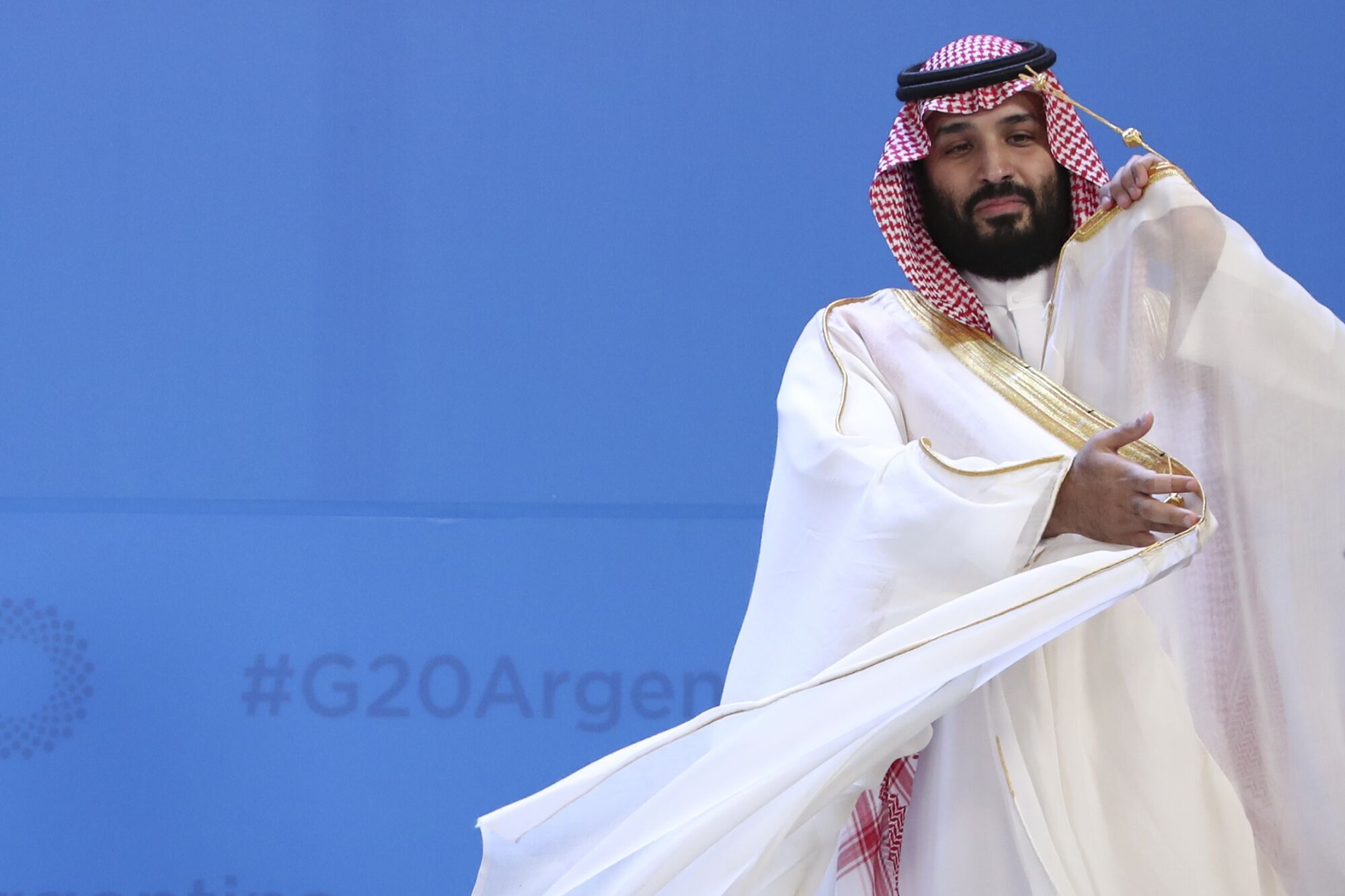
Saudi Crown Prince Mohammed bin Salman adjusts his robe as leaders gather at the Group of 20 major economies’ summit in Buenos Aires in 2018.
(Ricardo Mazalan / Associated Press)
Similar demolitions had been proposed in the past but foundered over concerns of how to deal with the displaced. Over the last year, however, authorities tore down 32 neighborhoods, displacing hundreds of thousands of people — some estimates say more than 1 million — almost half of them migrants whose families came decades ago for the pilgrimage to Mecca and never left. Sometimes residents were given only 24 hours’ notice before power and water were cut off, with no chance to stop the bulldozers that soon followed.
“They gave the people here less than 48 hours to leave,” said a man who emerged with two companions one morning from an abandoned building in the Ghulail district, a rubble-filled moonscape whose ripped-up streets and alleys still appear on Google Maps like some electronic fossil. Only a few blocks of the district are left.
Beyond lay a vast expanse of flattened earth with a clear view of the loading cranes of Jeddah’s port. The man, who declined to give his name, pointed toward the derricks.
“All of this before was buildings,” he said. “Now you can see all the way to the coast.”
The speed and breadth of the demolitions brought a raft of condemnation from rights groups saying they violated international human rights standards and discriminated against foreigners.
They also spurred rare demonstrations and an online campaign by former residents who said the destroyed areas, far from being hotbeds of crime, were working-class, multicultural districts that have given Jeddah a looser, friendlier image than that of cities like the Saudi capital, Riyadh. The motto of the city was “Jeddah gheyr”: “Jeddah is different.”
At a dilapidated strip mall, workers, many of them Sudanese immigrants, sat on dirt-stained plastic chairs inside a cafe and sipped jebena, coffee spiced with ginger.
“We don’t know if the plan is to continue and tear down this building, too,” said one 56-year-old man, who declined to be identified for fear of reprisals.
He gave a wan smile. “We’re foreigners. We can’t say anything. If we don’t do what they want us to do, we’re out.”
Other detractors level an often-repeated criticism that the Saudi government should invest in improving creaking infrastructure in Jeddah rather than building fancy towers. Recent events demonstrated their point: A few days of heavy rain in November saw widespread flooding in the city that killed two people and forced schools and universities to close; pictures on social media showed cars swept away by the deluge. Earlier this month, authorities warned of more flash floods and called on motorists to stay home. In 2009, floods killed 123 people.
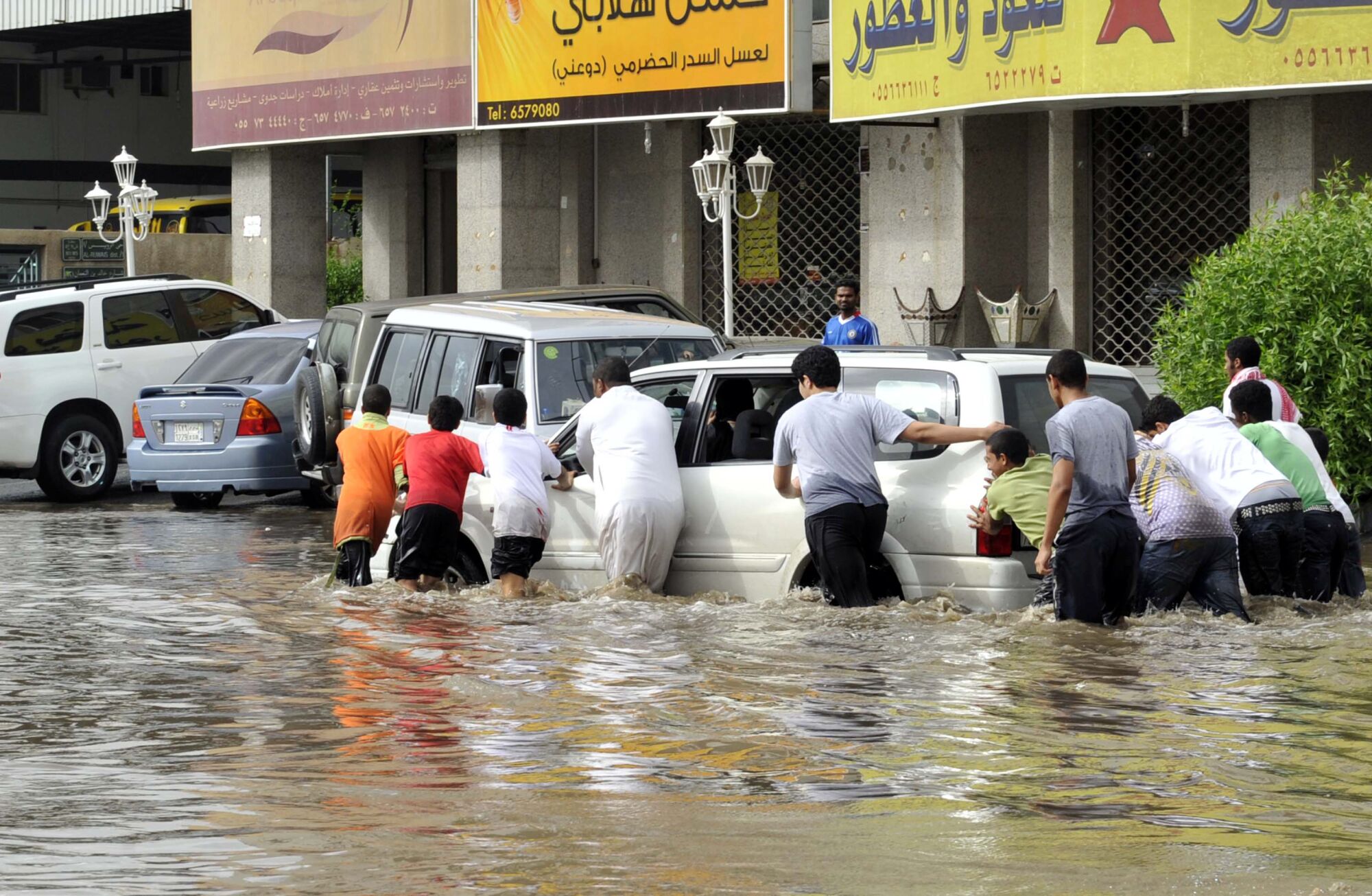
Men push a car stuck in a flooded street after heavy rain in the Red Sea port city of Jeddah, Saudi Arabia, on Dec. 30, 2010.
(Amer Hilibi / AFP/Getty Images)
Beyond the forced evictions, skeptics say there is a mentality at work that aims to create closed-off, Disneyland-like communities that function as profit generators but don’t provide the texture of a real city.
“Our cities are now being built by bankers. They’re capitalist cities of the first order,” said a Jeddah architect, who spoke anonymously to be able to comment freely.
“A city is supposed to be a common baseline. Everyone can live here,” the architect said. But the Jeddah Central Project’s chief backer, the sovereign fund controlled by the crown prince, “considers this backwards. The mandate is to make money. But some things just don’t make money.”
None of it will have the feel of a city, the architect added. “Before those neighborhoods were destroyed, you would walk around them and know they’re real. They pulsed with life. It’s not sterile like a mall.”
Even if the south Jeddah redevelopment is completed as planned, it’s unclear who will be able to afford to live there. The demolitions spurred a doubling of rents across the city, including less expensive neighborhoods on the periphery. Many residents were forced to leave altogether.
Jeddah authorities defend the project as a necessary corrective to decades of neglect and insist that compensation to those displaced is being disbursed equitably.
But the track record of similar endeavors, in Saudi Arabia and elsewhere, raises questions of whether people want to live in the sort of sterile environment on offer.
King Abdullah Economic City, which opened more than a decade ago and sits on a pristine chunk of coast nearly 70 miles north of Jeddah, was supposed to attract 2 million people by 2035; to date, its population has numbered anywhere from 4,000 to 7,000. Another intended mini-Dubai is Riyadh’s King Abdullah Financial District, a $10-billion white elephant that was announced 15 years ago but that the central government has since criticized as being built without consideration for its economic feasibility. It’s now undergoing restructuring and has yet to finish the first phase of its master plan.
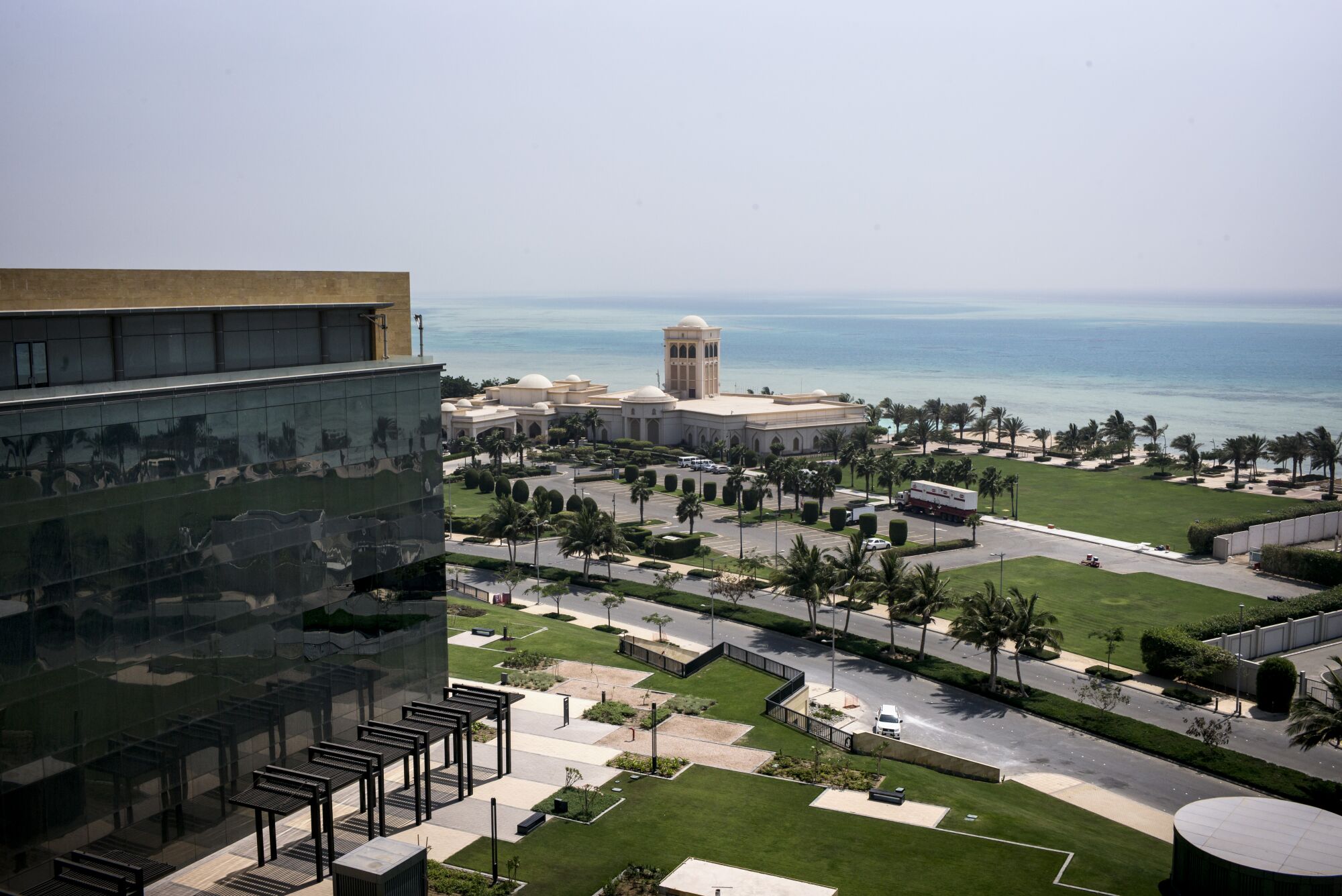
A view of the Saudi coast from the administrative building of the King Abdullah Economic City, a mammoth development project on the Red Sea.
(David Degner / Getty Images)
Masdar City in the United Arab Emirates, Malaysia’s Forest City and similar projects in China also report lackluster numbers of residents, despite similarly ambitious plans to remake urban life.
As for the seemingly frozen Jeddah Tower development, people associated with the project insist that construction will resume but offer no timeline. Others say a realignment in ownership needs to happen, along with a resolution of the debt-ridden Binladin Group’s liabilities.
Kingdom Holding, Prince Alwaleed’s company, sold a portion of its shares to the sovereign Public Investment Fund, meaning the state is now invested in the tower’s future. In the 2018 CNN interview, the company chief executive said that the tower project was in line with the crown prince’s vision to remake Saudi Arabia.
Get breaking news, investigations, analysis and more signature journalism from the Los Angeles Times in your inbox.
You may occasionally receive promotional content from the Los Angeles Times.
Still, a recent visit to the site showed no sign of progress or even preparations to restart construction; the only workers present were finishing up a nearby power substation meant to serve the 6,000 homes of Jeddah Economic City.
“We’ve been here for two years and seen no one on the tower,” said one worker, who did not give his name for privacy reasons.
Other developments also cast doubt on the project’s viability. Riyadh, with a Dubai-sized chip on its shoulder, aims to supersede not just its Emirati rival but also its sister city Jeddah, leading to reports last month that the Public Investment Fund is mulling over plans for a 6,000-foot-tall mega-tower as part of a larger development in Riyadh.
Consultants privately wonder whether that means the Jeddah Tower is orphaned; some speculate that an alternative plan could be to finish it at its current height or tear it down and start something new, despite more than a third of the concrete having already been poured and a lot of money spent.
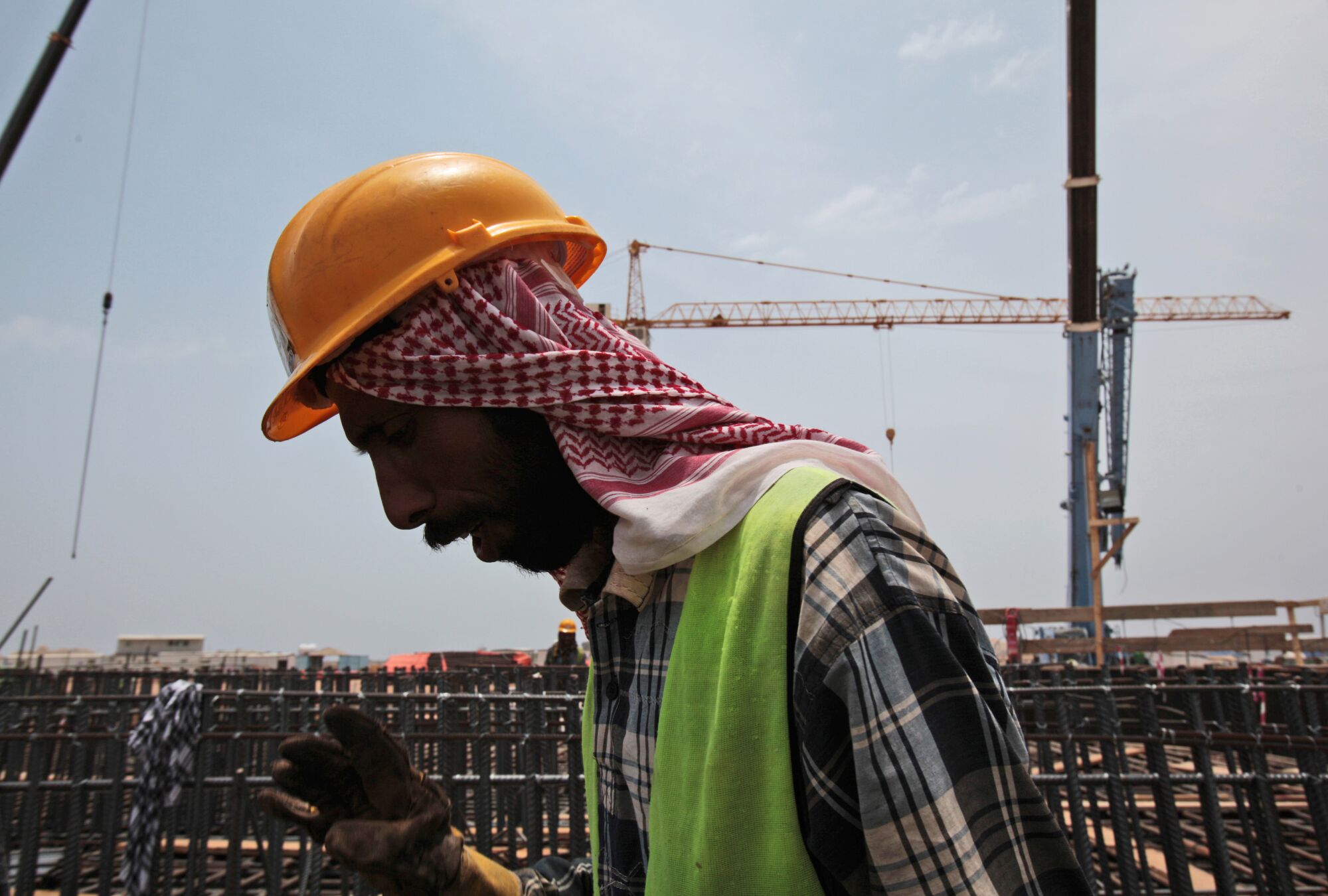
A man works on construction of the Jeddah Tower in May 2014.
(Hasan Jamali / Associated Press)
Kingdom Holding declined to comment. In an email, Smith, one of the tower’s designers, said he believes “it would be an incredible boost to the tourism industry and to Jeddah to see this tower restart and to reach its design height.”
Asked whether he expects the Jeddah Tower district to flourish as envisioned, the worker shrugged.
“It all depends on the tower. That’s the main attraction,” he said.
“If the tower doesn’t happen or go to the planned height, it’ll be difficult to get people here.”









